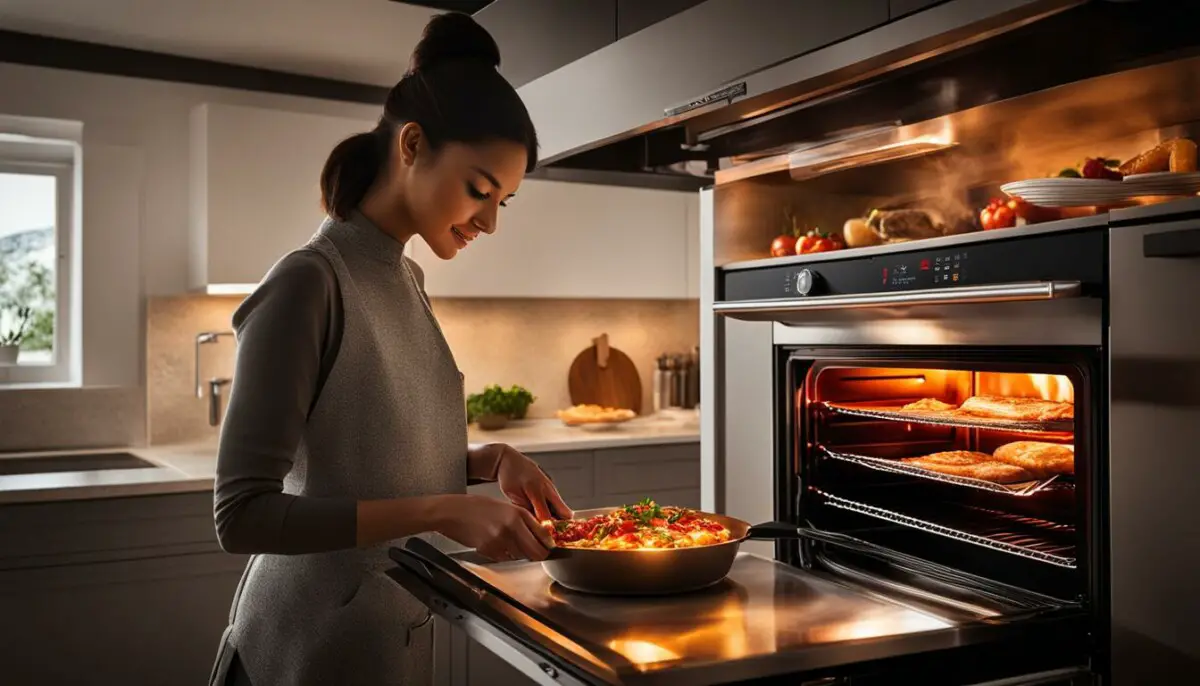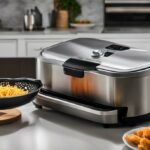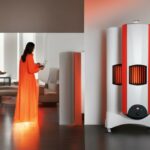Last Updated on 5 months by Francis
Welcome to our in-depth exploration of the safety of infrared ovens. Infrared ovens have gained popularity in commercial kitchens, homes, and industrial settings due to their unique cooking method. Instead of using conventional heating methods like conduction or convection, infrared ovens utilize infrared radiation to cook food. But, you may wonder, are infrared ovens safe?
Let’s dive into the details to understand the safety aspects of infrared ovens. Infrared ovens use infrared waves to heat objects directly, ensuring that the food cooked in these ovens is safe for consumption. In fact, infrared ovens offer several benefits, such as efficient heating, quick preheating, and the ability to retain the natural juices of the food.
Contents
Key Takeaways:
- Infrared ovens use infrared radiation for cooking instead of conventional heating methods.
- Food cooked in infrared ovens is safe for consumption.
- Infrared ovens provide efficient heating, quick preheating, and retain the natural juices of the food.
- They are commonly used in commercial kitchens, homes, and industrial settings.
- When used properly and following safety precautions, infrared ovens do not pose any health risks.
Understanding Infrared Technology in Cooking
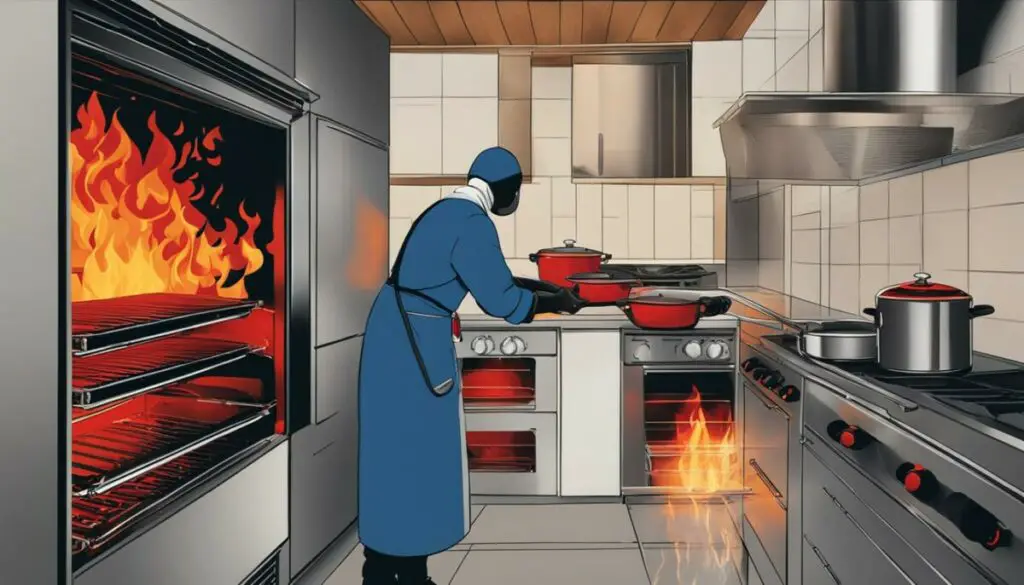
Infrared cooking is an innovative approach that utilizes infrared radiation to cook food. This technology has gained popularity due to its efficiency and ability to produce delicious and evenly cooked dishes. To better understand the safety aspects of infrared cooking, it is important to delve into the specifics of infrared ovens and their radiation levels.
Infrared ovens work by directing invisible infrared waves towards the food, heating it directly without affecting the surrounding air. The radiation levels emitted by these ovens are carefully controlled to ensure safety. In fact, the radiation levels in infrared ovens are not powerful enough to alter the molecular structure of the food or pose any health risks. However, it is always advisable to follow proper safety precautions when using these ovens.
When using an infrared oven, it is recommended to operate it in a well-ventilated area to prevent the accumulation of hot air or fumes. Additionally, prolonged exposure to high-intensity infrared emitters should be avoided. These precautions help mitigate any potential risks and ensure a safe cooking environment.
Safety Precautions and Guidelines:
- Operate the infrared oven in a well-ventilated area to prevent the buildup of hot air and fumes.
- Avoid prolonged exposure to high-intensity infrared emitters.
- Follow the manufacturer’s instructions for assembly, usage, and maintenance of the oven.
- Keep the oven away from flammable materials and water sources.
By understanding the technology behind infrared ovens and adhering to recommended safety measures, individuals can enjoy the benefits of efficient and safe cooking. In the next section, we will explore the various advantages of using infrared ovens over conventional methods.
Benefits of Using Infrared Ovens
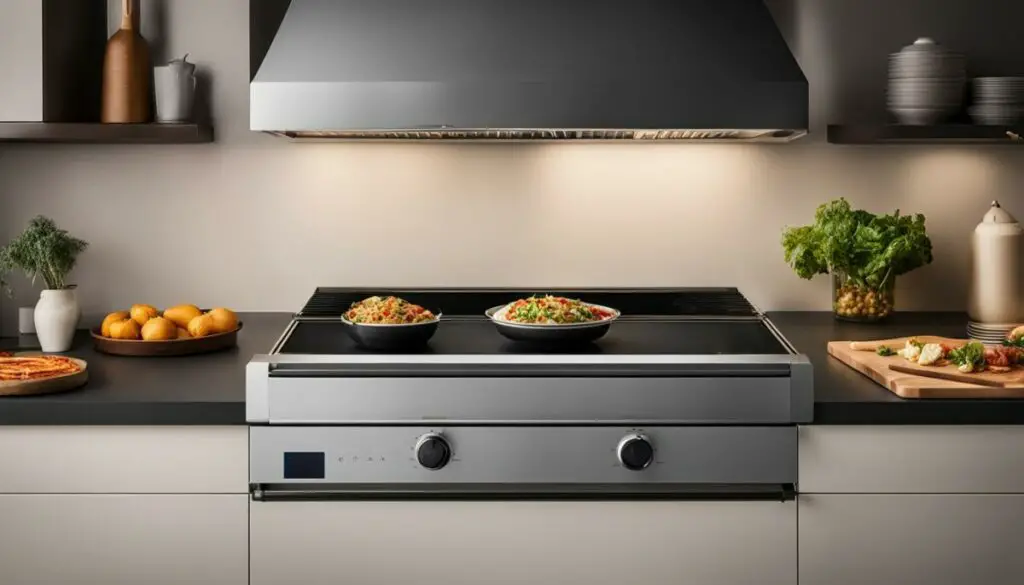
Infrared ovens offer numerous benefits that set them apart from conventional ovens. These advantages make them a popular choice among home cooks and professional chefs alike.
Even and Consistent Heat Distribution
One of the key benefits of using an infrared oven is its ability to provide more even and consistent heat distribution. Traditional ovens rely on convection or conduction to heat the food, which can result in unevenly cooked dishes. In contrast, infrared ovens use infrared waves to heat the food directly. This ensures that every part of the dish receives the same amount of heat, resulting in perfectly cooked meals.
Quick Preheating and Energy Efficiency
Infrared ovens heat up quickly, allowing you to start cooking your meals in no time. Unlike conventional ovens that need time to preheat, infrared ovens reach their desired temperature almost instantly. This not only saves you time but also reduces energy consumption, making infrared ovens more energy-efficient.
Retained Juices and Flavors
When food is cooked in an infrared oven, the infrared waves penetrate the surface and heat the food from the inside out. This gentle cooking process helps retain the natural juices and flavors of the food, resulting in moist and flavorful dishes. Whether you’re cooking meat, vegetables, or baked goods, the infrared oven ensures that your food stays juicy and full of flavor.
Overall, the benefits of using infrared ovens make them an excellent choice for anyone looking for efficient and flavorful cooking. With their even heat distribution, quick preheating, and ability to retain food’s natural juices, infrared ovens offer a superior cooking experience compared to conventional ovens.
Debunking Infrared Oven Myths
When it comes to infrared ovens, there are several myths and misconceptions that have caused concerns about their safety. However, it is essential to separate fact from fiction and understand the truth behind these myths. Infrared ovens operate within safe radiation levels and do not pose any health risks.
One common myth is that infrared ovens emit harmful radiation that can be detrimental to health. In reality, the radiation levels in infrared ovens are carefully regulated and are not powerful enough to cause any adverse effects. These ovens use infrared waves to directly heat the food, bypassing the surrounding air. This targeted heating method ensures efficient and even cooking while minimizing any potential risks.
Another misconception is that using an infrared oven can lead to a loss of nutrients in the food. However, studies have shown that infrared cooking retains the natural flavors, juices, and nutrients of the food. The precise and efficient heating process helps to lock in the flavors, resulting in moist and delicious dishes.
“Infrared ovens operate within safe radiation levels and do not pose any health risks.”
Furthermore, some people believe that infrared ovens can cause food to become dry or overcooked. On the contrary, infrared cooking actually helps to retain the moisture in the food, resulting in succulent and perfectly cooked meals. The infrared waves penetrate the food and heat it from the inside out, ensuring that the food remains moist and flavorful.
Overall, it is important to dispel the myths surrounding infrared ovens. These appliances provide safe and efficient cooking methods, delivering delicious and nutritious meals. By debunking these misconceptions, individuals can confidently embrace the benefits of infrared cooking.
| Myth | Fact |
|---|---|
| Infrared ovens emit harmful radiation | Infrared ovens operate within safe radiation levels and do not pose any health risks. |
| Infrared cooking leads to a loss of nutrients | Infrared cooking retains the natural flavors, juices, and nutrients of the food. |
| Infrared ovens cause food to become dry or overcooked | Infrared cooking helps to retain the moisture in the food, resulting in succulent and perfectly cooked meals. |
How Infrared Ovens Work
Infrared ovens operate by utilizing electromagnetic radiation with wavelengths ranging from 780 nm to 1 mm to heat objects, including food. Unlike conventional ovens that rely on conduction or convection, infrared ovens emit infrared waves that directly target the food, bypassing the surrounding air. This direct heating method allows for efficient and quick cooking.
The energy from the infrared waves is absorbed by the food, which then heats up. The result is evenly cooked dishes that retain their natural flavors and juices. Reflectors and shields inside the oven help direct the infrared energy and maintain an optimal line of sight between the heat source and the food.
By using infrared technology, these ovens provide several advantages. Not only do they heat up quickly and preheat faster than conventional ovens, they also offer more even and consistent heat distribution. This means that food cooks more evenly, resulting in tastier and more flavorful dishes. Moreover, infrared ovens are energy-efficient, making them a cost-effective option for both residential and commercial use.
| Advantages of Infrared Ovens | Benefits |
|---|---|
| Efficient Heating | Food cooks more quickly and evenly |
| Quick Preheating | Oven reaches desired temperature faster |
| Retains Food’s Natural Juices | Dishes are moist and flavorful |
| Energy-Efficient | Saves on electricity or gas usage |
Selecting the Right Infrared Oven
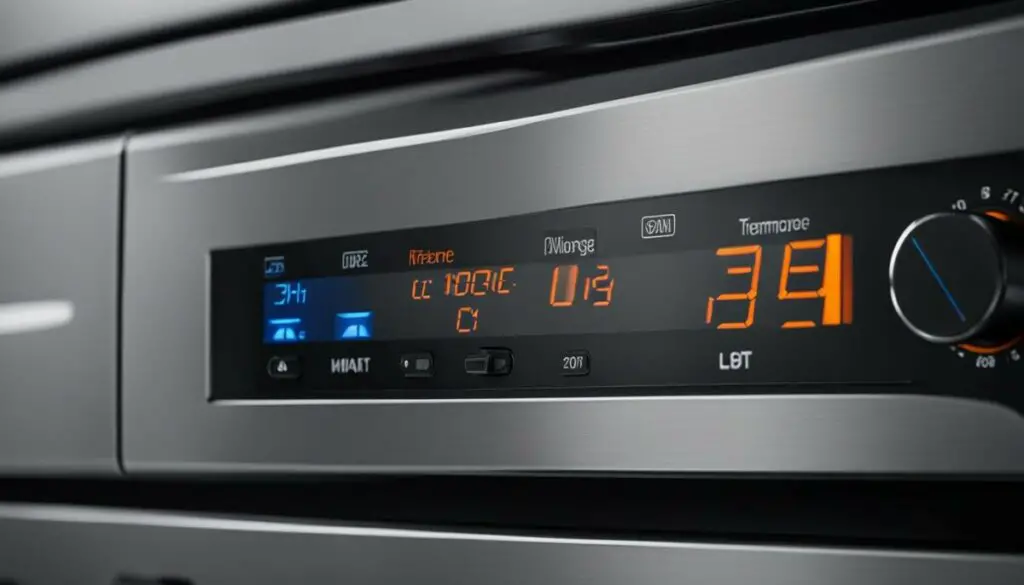
When choosing an infrared oven, there are several important considerations to keep in mind. By taking these factors into account, you can ensure that you select an oven that best suits your specific needs and requirements.
Energy Source
One of the first things to consider is the energy source for your infrared oven. There are different options available, including electricity, propane, or natural gas. Each energy source has its own advantages and potential drawbacks, so it’s important to choose one that aligns with your preferences and the availability of resources in your area.
Specifications and Features
Next, carefully review the specifications and features of the infrared ovens you are considering. This includes factors such as the oven’s cooking capacity, heat output, temperature control options, and any additional features that may be important to you. It’s essential to choose an oven that can accommodate the volume of food you need to cook and offers the functionality you desire.
Size and Budget
The size of the infrared oven is another crucial consideration. Evaluate the available space in your kitchen or commercial setting to determine the appropriate size for your needs. Additionally, establish a budget for your purchase and look for ovens that fall within your financial parameters. It’s important to strike a balance between size, features, and cost to find the best value for your investment.
Maintenance Requirements
Finally, consider the maintenance requirements of the infrared oven. Some ovens may require regular cleaning or specific maintenance procedures. Understanding these requirements upfront will help you plan for ongoing upkeep and ensure the longevity and optimal performance of your chosen oven.
By carefully considering these factors, you can confidently select the right infrared oven for your cooking needs. Whether it’s for your home or commercial kitchen, choosing an oven that aligns with your preferences and requirements will help you maximize the benefits and enjoy safe and efficient cooking.
Types of Infrared Ovens
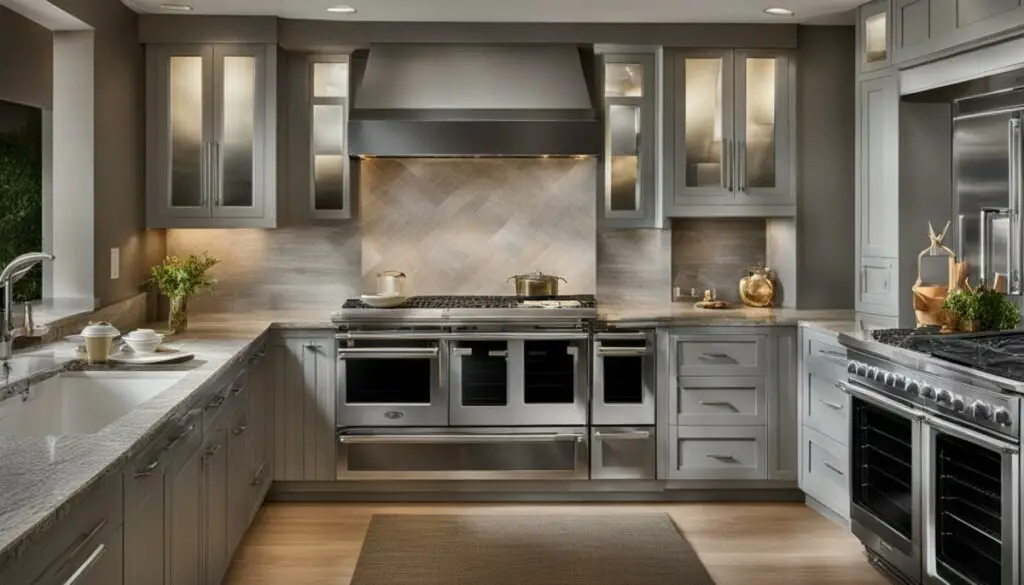
When it comes to infrared ovens, there are various types available on the market. Each type offers unique features and benefits, making them suitable for different applications. Let’s take a closer look at some of the most common types:
Infrared Convection Ovens
These ovens combine the power of infrared radiation with convection technology, providing both direct heat and circulated hot air. This combination ensures faster and more even cooking, ideal for baking, roasting, and grilling.
Electric Infrared Ovens
Electric infrared ovens are popular for their energy efficiency and compact size. They utilize infrared radiation produced by electric heating elements to cook food. These ovens are versatile and can be used for a wide range of cooking tasks, from toasting and broiling to baking and dehydrating.
Gas Infrared Ovens
Gas infrared ovens use natural gas or propane as the energy source to generate infrared radiation. They are known for their quick preheating capabilities and precise temperature control. Gas infrared ovens are commonly used in commercial kitchens, providing efficient and consistent cooking results.
Portable Infrared Ovens
These compact and lightweight ovens are designed for on-the-go cooking. They are powered by electricity or can be fueled by propane, making them perfect for camping trips, outdoor events, and small kitchens. Portable infrared ovens offer convenience and versatility, allowing you to enjoy infrared cooking wherever you go.
| Type of Infrared Oven | Features | Applications |
|---|---|---|
| Infrared Convection Ovens | Combines infrared radiation with convection technology for faster and more even cooking | Baking, roasting, grilling |
| Electric Infrared Ovens | Energy-efficient and compact size | Toasting, broiling, baking, dehydrating |
| Gas Infrared Ovens | Quick preheating and precise temperature control | Commercial kitchens, professional cooking |
| Portable Infrared Ovens | Compact, lightweight, and portable | Camping, outdoor events, small kitchens |
Each type of infrared oven has its own advantages and is suited for specific cooking needs. Consider the features and applications mentioned above to choose the right type of infrared oven for your kitchen or commercial setting.
Safety Precautions and Usage Guidelines
When using an infrared oven, it is crucial to follow safety precautions to ensure a safe cooking experience. Here are some guidelines to keep in mind:
- Use the oven in a well-ventilated area to prevent the buildup of fumes or gases. Infrared ovens emit heat, and proper ventilation helps dissipate any excess heat or gases.
- Avoid placing the oven near flammable materials or objects that can catch fire easily. Keep a safe distance from curtains, paper, or other combustible substances.
- Never leave the oven unattended while it is in use. As with any cooking appliance, it is essential to monitor the cooking process to prevent accidents or potential hazards.
- Follow the manufacturer’s instructions for assembly and maintenance. Regularly clean the oven to remove any food residue or grease buildup that can affect its performance.
- Do not immerse the oven in water or expose it to excessive moisture. Moisture can damage the electrical components and pose a risk of electric shock.
- Be cautious when handling the oven and its settings while cooking. Use oven mitts or heat-resistant gloves to protect your hands from potential burns.
“Proper ventilation and careful handling are key to safe usage of infrared ovens. By following these guidelines, you can enjoy the benefits of efficient and flavorful cooking without any safety concerns.”
Comparison of Infrared Oven Safety Precautions
When it comes to safety precautions, different infrared ovens may have specific guidelines and recommendations. Here is a comparison of common safety precautions for different types of infrared ovens:
| Electric Infrared Oven | Propane Infrared Oven | Natural Gas Infrared Oven | |
|---|---|---|---|
| Ventilation | Requires adequate ventilation to dissipate excess heat and fumes. | Needs proper ventilation to prevent the accumulation of gases and fumes. | Requires ventilation to maintain indoor air quality and prevent gas buildup. |
| Flammable Materials | Keep a safe distance from flammable objects to avoid fire hazards. | Requires caution to prevent fire risks when using propane fuel. | Similar precautions as propane infrared ovens to prevent fire hazards. |
| Assembly and Maintenance | Follow the manufacturer’s instructions for proper assembly and maintenance. | Proper assembly and regular maintenance are necessary for optimal performance. | Similar guidelines as propane infrared ovens for assembly and maintenance. |
Remember to always refer to the specific guidelines provided by the manufacturer for your particular infrared oven model. Following these safety precautions ensures a safe and enjoyable cooking experience, allowing you to make the most of your infrared oven’s benefits.
Conclusion
After exploring the safety and benefits of infrared ovens, it is clear that they are a safe and efficient option for cooking. The use of infrared radiation allows for direct heating of food, resulting in evenly cooked dishes and the retention of natural flavors. Infrared ovens operate within safe radiation levels, ensuring that they do not pose any health risks.
By following simple safety precautions, such as using the oven in a well-ventilated area and avoiding direct exposure to high-intensity infrared emitters for extended periods, individuals can confidently use infrared ovens in their kitchens or commercial settings without any concerns about safety.
Infrared cooking is a popular choice due to its numerous advantages, including efficient heating, quick preheating, and energy efficiency. The ability of infrared ovens to retain the natural juices of the food further enhances the taste and quality of the dishes prepared.
Therefore, for those considering an infrared oven, it is worth noting that they offer a safe and reliable method of cooking. With proper usage and attention to safety precautions, infrared ovens can provide delicious meals and a convenient cooking experience.
FAQ
Are infrared ovens safe to use?
Yes, infrared ovens are safe to use. They operate within safe radiation levels and do not pose any health risks when used properly.
How does infrared cooking work?
Infrared cooking utilizes infrared radiation, a type of electromagnetic radiation, to directly heat the food. The infrared waves target the food, bypassing the surrounding air, resulting in even and consistent heat distribution.
What are the benefits of using infrared ovens?
Infrared ovens offer several advantages over conventional ovens. They provide efficient and even heating, preheat quickly, and retain the natural juices and flavors of the food.
Are there any health risks associated with infrared ovens?
No, there are no health risks associated with infrared ovens. They operate within safe radiation levels that do not alter the molecular structure of the food or pose any health risks when used correctly.
How do infrared ovens work?
Infrared ovens use electromagnetic radiation with specific wavelengths to heat objects. The infrared waves are directed towards the food, heating it without affecting the surrounding air. Reflectors and shields inside the oven help direct the infrared energy for optimal cooking.
What factors should I consider when selecting an infrared oven?
When selecting an infrared oven, consider factors such as the energy source, specifications, temperature control features, size, budget, maintenance requirements, and the intended application.
What types of infrared ovens are available?
There are various types of infrared ovens, including electric infrared ovens. Each type has its own features and benefits, making them suitable for different applications. Electric infrared ovens are popular for their energy efficiency and compact size.
What safety precautions should I follow when using an infrared oven?
To ensure safe usage of infrared ovens, it is important to use them in a well-ventilated area, keep them away from flammable materials and water sources, and follow the manufacturer’s instructions for assembly and maintenance. Users should also exercise caution when handling the oven and its settings while cooking.
Are infrared ovens a safe option for cooking?
Yes, infrared ovens are a safe and efficient option for cooking. They use infrared radiation to directly heat food, resulting in evenly cooked dishes and retained flavors. When used properly and following safety precautions, infrared ovens do not pose any health risks.

